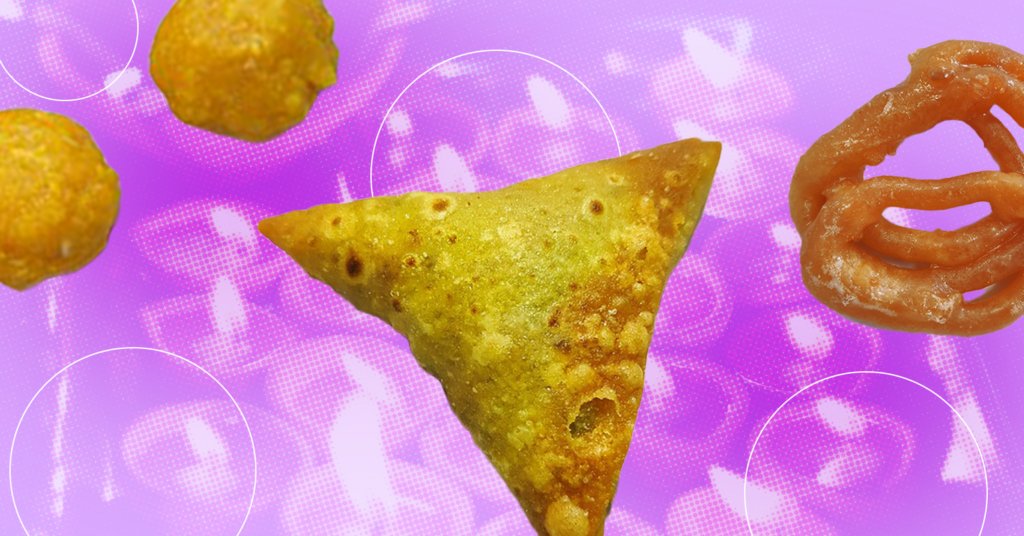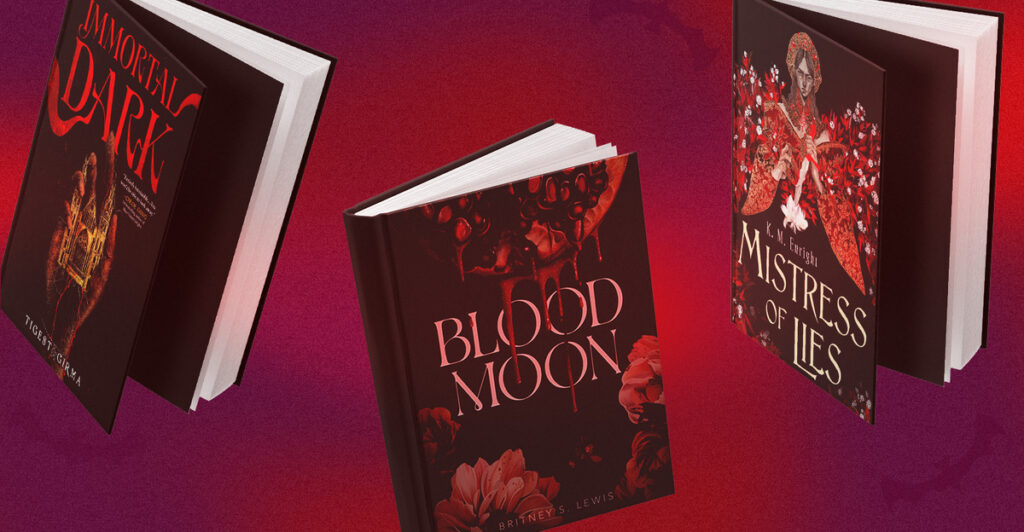As Diwali approaches, homes across India and beyond start to fill with the warm aromas of spices, roasting nuts, and bubbling sweets. The kitchen becomes a heart of celebration, where generations gather, sleeves rolled up, crafting traditional treats that symbolize the joy and abundance of this festival. In every region, families prepare their own special recipes passed down through stories and shared memories — flaky samosas, golden ladoos, and jewel-toned jalebis that shine as brightly as the festive lights outside.
For many, the festival is as much about these beloved flavors as it is about the fireworks and diyas. As each dish is prepared and tasted, it becomes a celebration of the season’s spirit — a symbol of gratitude, love, and the warmth that brings people together in these cherished moments. In this installment of EnVi Eatery, EnVi peels back the layers of what makes each celebration, such as Diwali, special: the food that complements it.
The Crispy & Flaky Samosa
The samosa, one of India’s most iconic and beloved savory street foods, holds a unique place in Indian cuisine and culture, enjoyed at family gatherings, street-side stalls, tea breaks, and festive occasions alike. This triangular pastry, filled traditionally with spiced potatoes, peas, and sometimes minced meat, combines a crispy exterior with a rich, savory filling — a contrast that has won it countless admirers across the Indian subcontinent and beyond.
Though samosas are widely associated with Indian cuisine today, their origins are traced back to the Middle East, where a similar pastry, known as sambosa or sanbusak, was popular. These pastries found their way to India around the 13th or 14th century, likely brought by merchants and travelers along trade routes or introduced by Mughal rulers who had connections with Central Asia and the Persian Empire. The original sambosa was a meat-filled pastry, but as it migrated to India, the recipe evolved to reflect local tastes and ingredients. This led to the creation of the vegetarian potato filling, often spiced with cumin, coriander, and green chilies, which has become one of the defining flavors of the Indian samosa.
Today, it’s served with tamarind or mint chutneys, adding tang and spice to each bite, and is often accompanied by a hot cup of chai, especially during the monsoon season. Variations abound across India: in some regions, samosas are filled with paneer, chickpeas, or even noodles. Others feature unique shapes or additional spices, highlighting the diversity of Indian street food and regional cooking styles.
Just as homes are decorated with lights and rangoli, and prayers are offered to deities, the feast shared among family and friends is integral to the celebration. Samosas are a popular choice because they’re not just delicious — they’re easy to make in large quantities and perfect for sharing. The process of making samosas can even be a bonding experience, as families or friends gather to prepare, stuff, and fry them together.
Ladoo Embodies Good Fortune & Happiness
Ladoo, a beloved Indian sweet, has a special place in every household, from bustling cities to quiet villages. This golden, round delicacy, typically made from ingredients like gram flour (besan), sugar, and ghee, has been passed down through generations, evolving with each family’s unique twist.
The history of ladoo harkens back centuries, rooted deeply in India’s culinary and cultural traditions. Originating as a simple blend of grains, sugar, and ghee, ladoo (also spelled as laddu) has grown into one of India’s most beloved sweets, celebrated in households and temples alike. It is thought that ladoos first emerged as nutritious snacks, particularly in Ayurveda, where they were used as energy-boosting foods. Early Ayurvedic texts reference medicinal ladoos, prepared using ingredients like sesame seeds, nuts, herbs, and jaggery, which were believed to aid in digestion, boost immunity, and provide warmth to the body.
Each type of ladoo carries a story of flavor and tradition. The nutty warmth of besan ladoo comes from slow-roasted gram flour, bringing comfort on winter days. Boondi ladoo, with its tiny syrup-soaked pearls, embodies celebration and joy, especially during festivals. Coconut ladoo, tender and lightly sweet, reflects the coastal charm of fresh coconut, while the saffron-scented motichoor ladoo, with its fine pearls, is a symbol of blessings at auspicious gatherings. Tilgul ladoo, made from sesame and jaggery, is shared during Makar Sankranti. It embodies the custom “Tilgul ghya, god god bola,” meaning “Take this sesame and jaggery, and speak sweetly,” encouraging kindness and goodwill.
As families gather to prepare for the Festival of Lights, ladoos of all kinds — besan, boondi, coconut, and more — are made with care, symbolizing abundance and sweetness in the coming year. These golden, flavorful treats are offered to guests, exchanged with neighbors, and presented in temples as blessings.
Sugary & Sweet Jalebi
Jalebi is a beloved Indian sweet, known for its unique spiral shape and crispy texture. It is made by deep-frying a batter of all-purpose flour (maida) and then soaking the fried pieces in sugar syrup, resulting in a chewy, sweet treat that is often enjoyed warm or cold.
Jalebi traces its origins to Persian cuisine, where it was known as zolbiya or zalabiya. Brought to India by Persian-speaking Turkic invaders, it has since woven itself into the fabric of Indian culinary tradition.
Today, jalebi is not only a beloved treat but also a festive favorite, enjoyed during celebrations and special gatherings. Often paired with milk or served alongside savory snacks like samosas, its versatility allows it to be enjoyed at any time of day, making it a staple in many Indian households.
With its irresistible taste and cultural significance, jalebi has become a cherished sweet across India and beyond. Its ability to adapt and thrive in different culinary settings highlights its lasting appeal across cultures and communities.
Aromatic Cardamom Makes a Nankathai
Indian cardamom biscuits called nankhatai, are a cherished treat during DiwaliKnown for their rich flavor and crumbly texture, these traditional biscuits are a family favorite during the festive season.
Nankhatai is a type of shortbread biscuit that originated in Gujarat, India. Its name comes from Persian roots, with “nan” meaning bread and “khatai” meaning biscuit. Made especially during festivals like Diwali, these biscuits symbolize hospitality and are often shared with guests as part of festive traditions.
During Diwali, nankhatai comes in delightful variations. Some recipes include pluot and cardamom thumbprints, adding a colorful twist with fruit jam at the center, while vegan versions replace ghee with coconut oil, retaining the sweet and fragrant cardamom flavor.
Cardamom biscuits like nankhatai capture the spirit of Diwali, embodying the joy of sharing and celebration. Their warm flavor, highlighted by aromatic cardamom, makes them a staple of Diwali gatherings, whether enjoyed with tea or gifted in festive boxes. These biscuits bring warmth and sweetness to the celebration, adding a comforting touch to the season.
Diwali’s aromatic feasts capture the heart of the festival, blending spices, flavors, and stories that bring people together in celebration. Through traditional sweets, savory treats, and cherished family recipes, the spirit of Diwali shines, filling homes with warmth, joy, and the unmistakable essence of togetherness.
Interested in more Diwali content? Check out our list of 5 Indian movies released this Diwali here!




